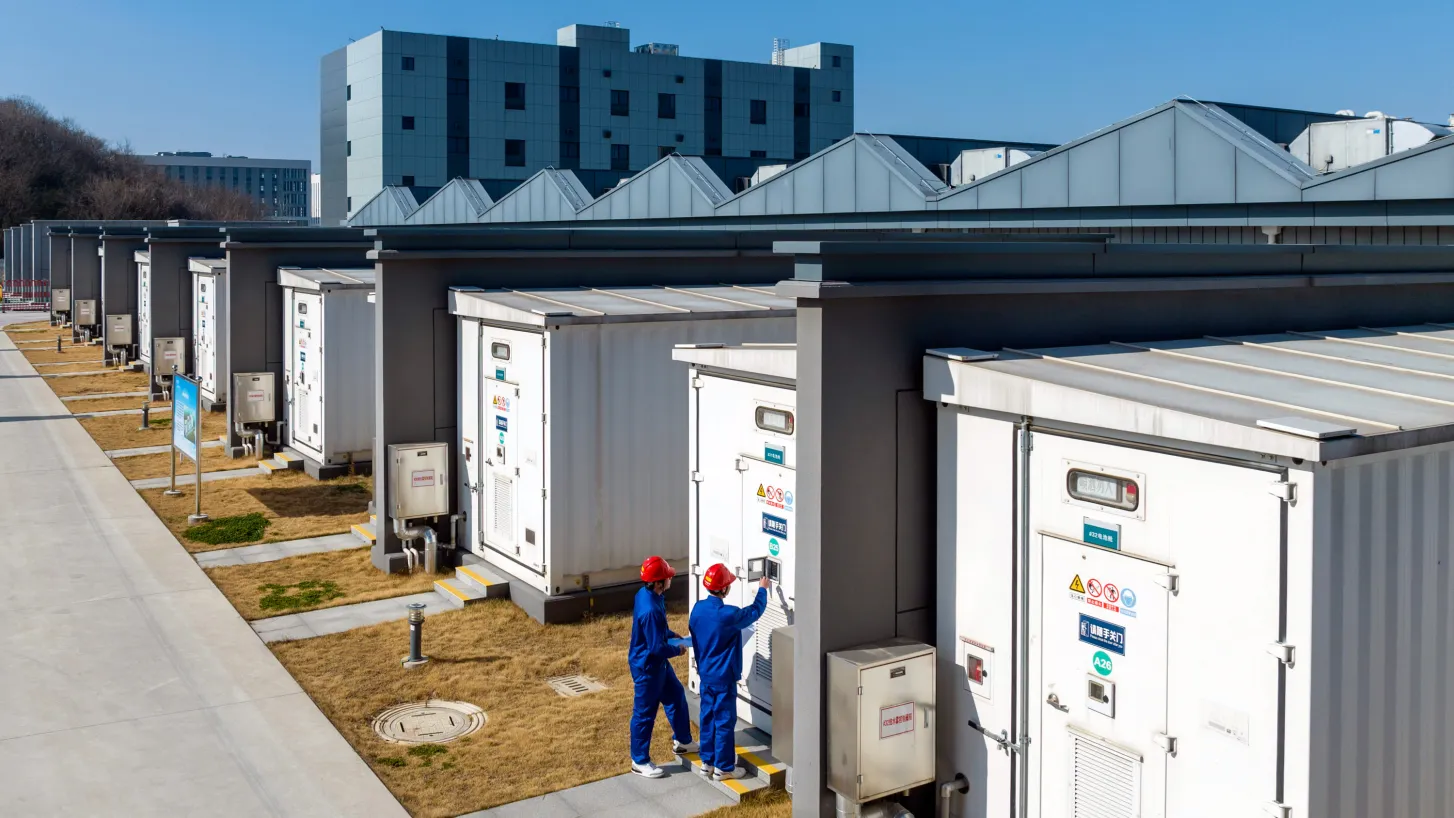Batteries are on my mind this week. (Aren’t they always?) But I’ve got two extra reasons to be thinking about them today.
First, there’s a new special report from the International Energy Agency all about how crucial batteries are for our future energy systems. The report calls batteries a “master key,” meaning they can unlock the potential of other technologies that will help cut emissions. Second, we’re seeing early signs in California of how the technology might be earning that “master key” status already by helping renewables play an even bigger role on the grid. So let’s dig into some battery data together.
1) Battery storage in the power sector was the fastest-growing commercial energy technology on the planet in 2023.
Deployment doubled over the previous year’s figures, hitting nearly 42 gigawatts. That includes utility-scale projects as well as projects installed “behind the meter,” meaning they’re somewhere like a home or business and don’t interact with the grid.
Over half the additions in 2023 were in China, which has been the leading market in batteries for energy storage for the past two years. Growth is faster there than the global average, and installations tripled from 2022 to last year.
One driving force of this quick growth in China is that some provincial policies require developers of new solar and wind power projects to pair them with a certain level of energy storage, according to the IEA report.
Intermittent renewables like wind and solar have grown rapidly in China and around the world, and the technologies are beginning to help clean up the grid. But these storage requirement policies reveal the next step: installing batteries to help unlock the potential of renewables even during times when the sun isn’t shining and the wind isn’t blowing.
2) Batteries are starting to show exactly how they’ll play a crucial role on the grid.
When there are small amounts of renewables, it’s not all that important to have storage available, since the sun’s rising and setting will cause little more than blips in the overall energy mix. But as the share increases, some of the challenges with intermittent renewables become very clear.
We’ve started to see this play out in California. Renewables are able to supply nearly all the grid’s energy demand during the day on sunny days. The problem is just how different the picture is at noon and just eight hours later, once the sun has gone down.
In the middle of the day, there’s so much solar power available that gigawatts are basically getting thrown away. Electricity prices can actually go negative. Then, later on, renewables quickly fall off, and other sources like natural gas need to ramp up to meet demand.
But energy storage is starting to catch up and make a dent in smoothing out that daily variation. On April 16, for the first time, batteries were the single greatest power source on the grid in California during part of the early evening, just as solar fell off for the day. (Look for the bump in the darkest line on the graph above—it happens right after 6 p.m.)
Batteries have reached this number-one status several more times over the past few weeks, a sign that the energy storage now installed—10 gigawatts’ worth—is beginning to play a part in a balanced grid.
3) We need to build a lot more energy storage. Good news: batteries are getting cheaper.
While early signs show just how important batteries can be in our energy system, we still need gobs more to actually clean up the grid. If we’re going to be on track to cut greenhouse-gas emissions to zero by midcentury, we’ll need to increase battery deployment sevenfold.
The good news is the technology is becoming increasingly economical. Battery costs have fallen drastically, dropping 90% since 2010, and they’re not done yet. According to the IEA report, battery costs could fall an additional 40% by the end of this decade. Those further cost declines would make solar projects with battery storage cheaper to build than new coal power plants in India and China, and cheaper than new gas plants in the US.
Batteries won’t be the magic miracle technology that cleans up the entire grid. Other sources of low-carbon energy that are more consistently available, like geothermal, or able to ramp up and down to meet demand, like hydropower, will be crucial parts of the energy system. But I’m interested to keep watching just how batteries contribute to the mix.

